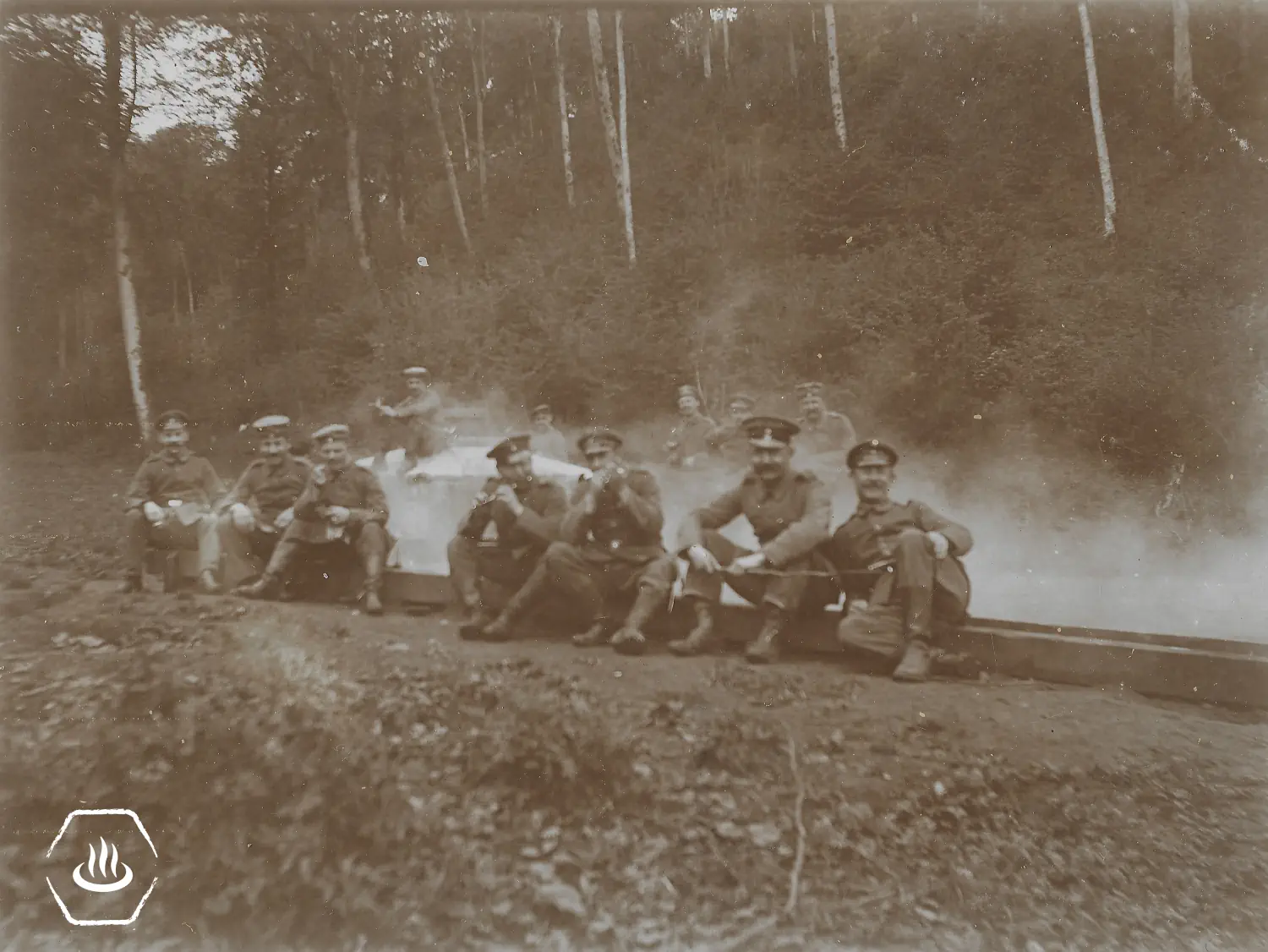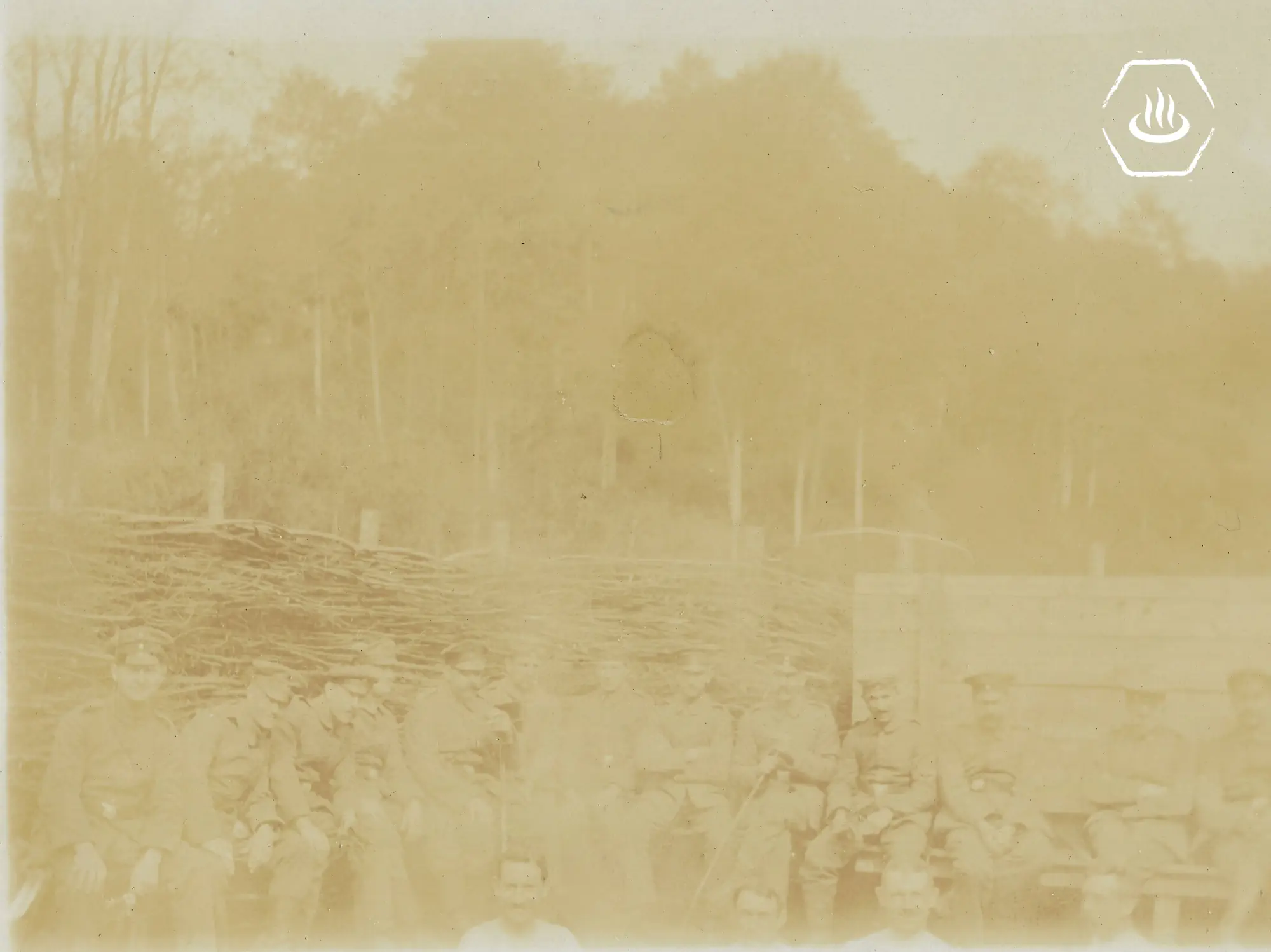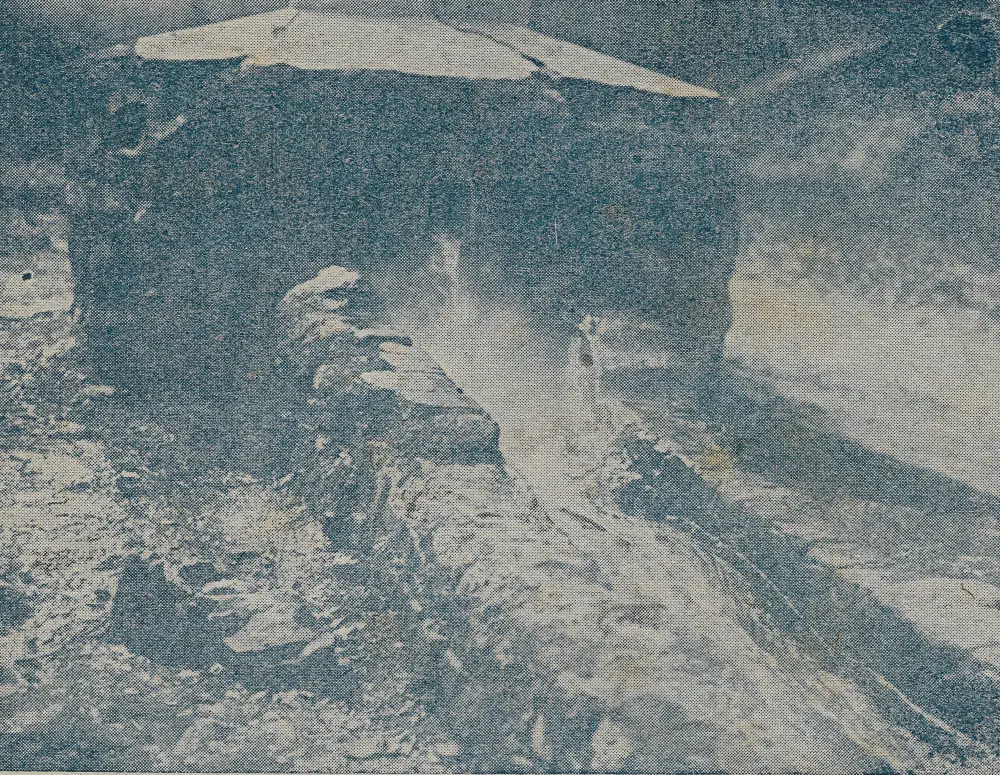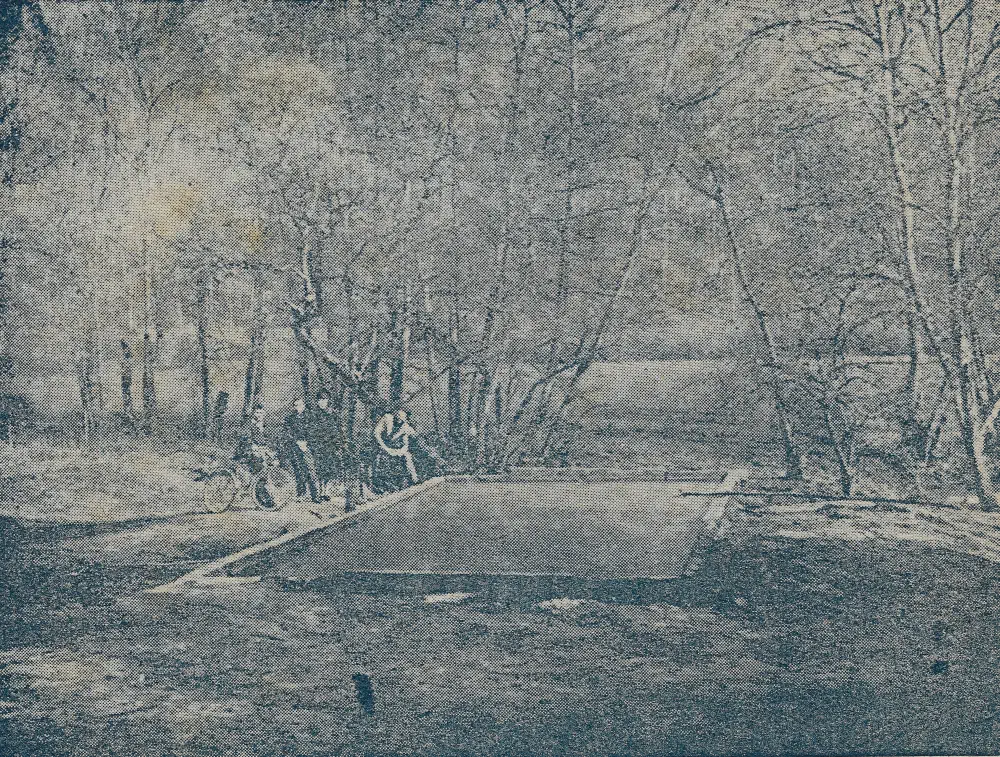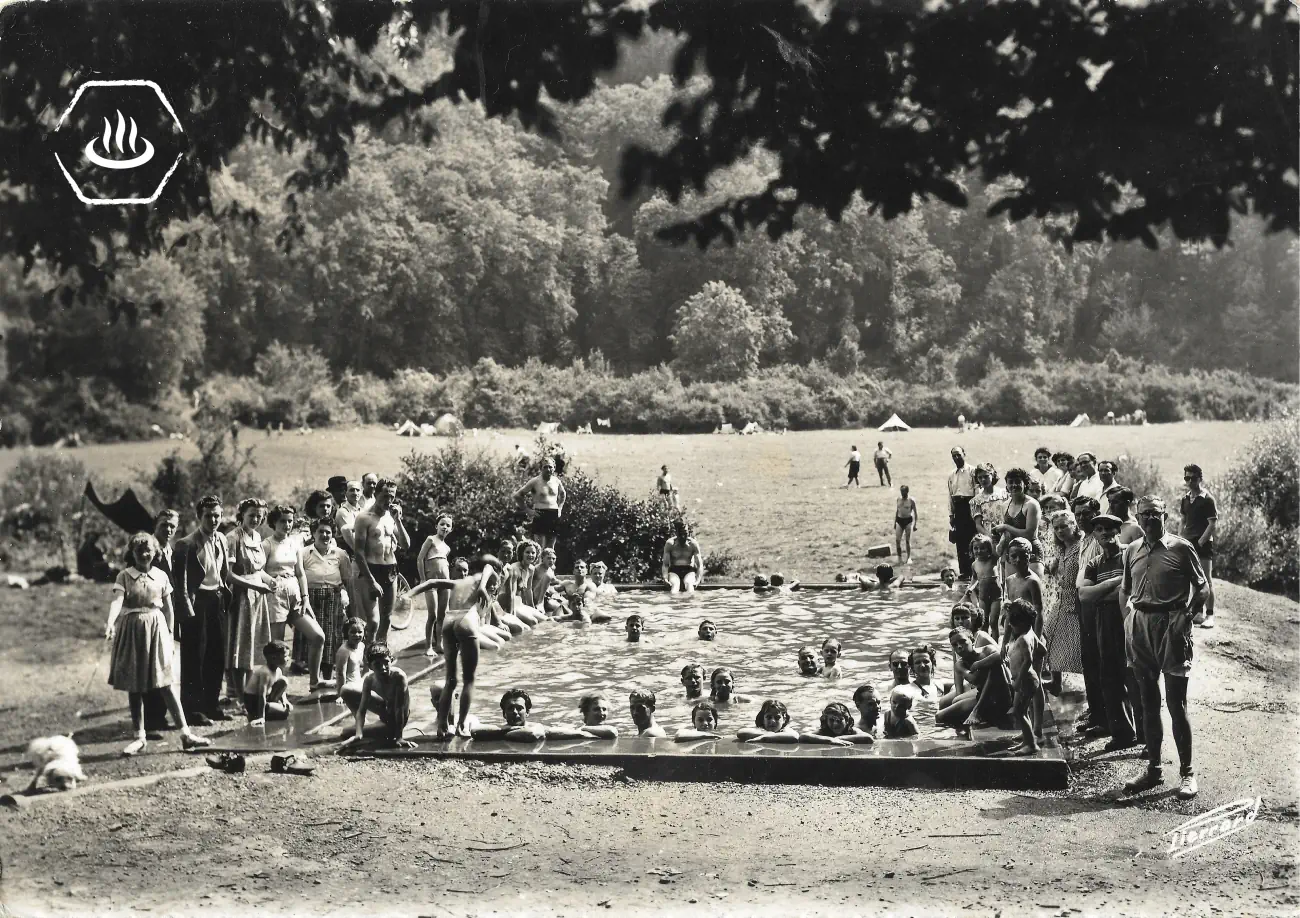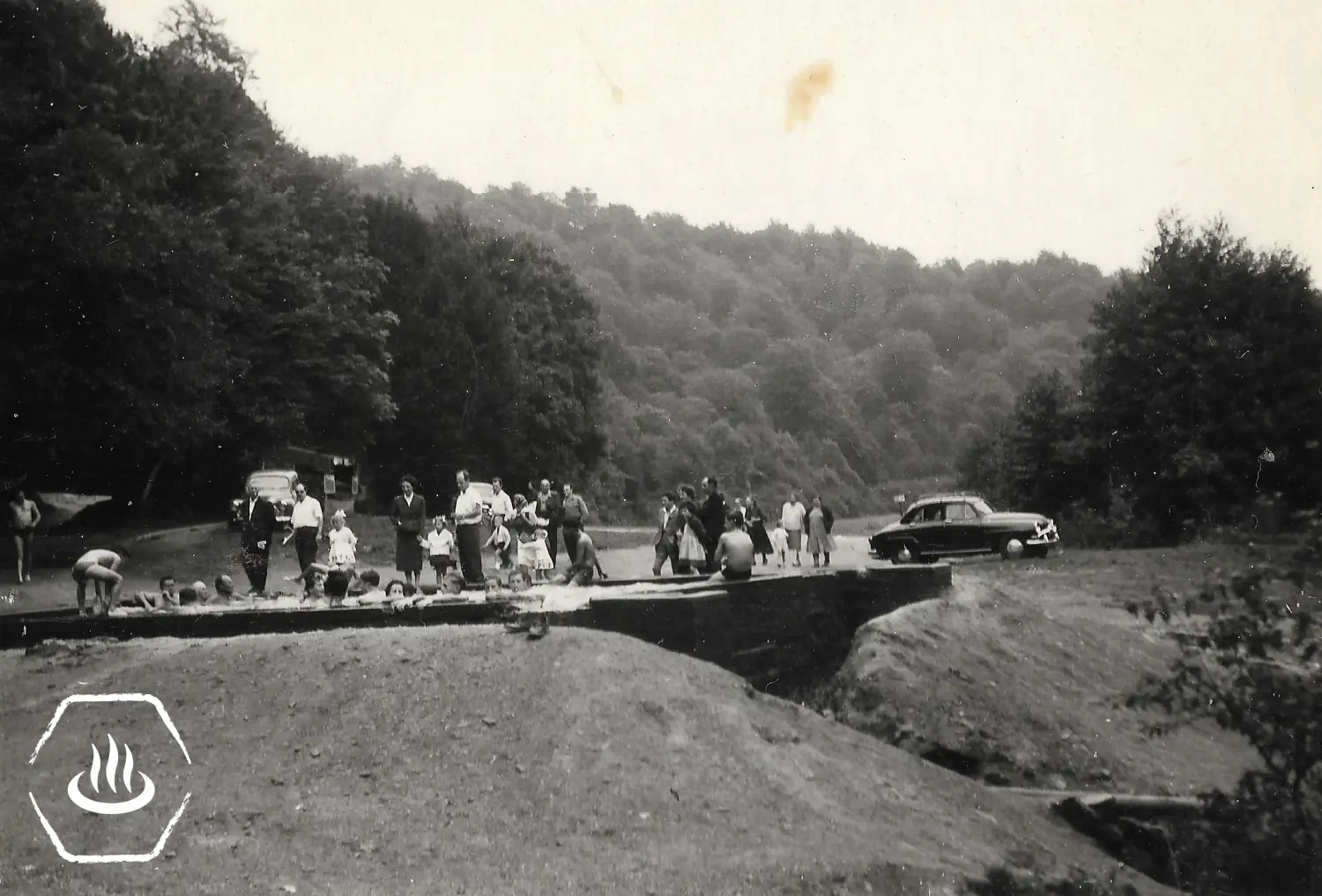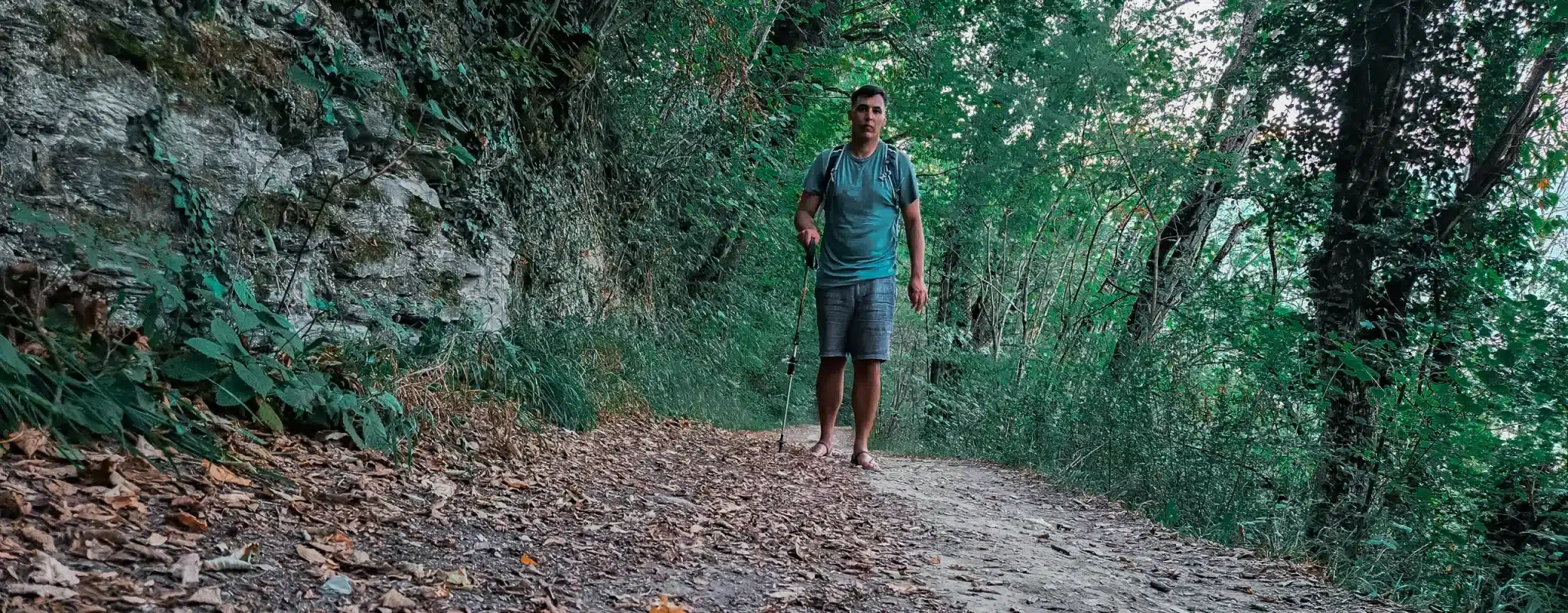The old Pérotin hot spring in Moselle, France
- Nature Source Chaude
- Published on
- Updated on 28 October 2025
The Pérotin site lies between the Meurthe-et-Moselle and Moselle rivers, west of Avril and east of Moyeuvre-Petite. It was once home to an abundant hot spring.
According to analyses, the spring contained a high proportion of minerals, and its success in providing cures is testament to its remarkable healing properties. The site was well known to all inhabitants of the region because of its reputation for curing numerous ailments.
However, the spring dried up in the 1970s. So what is the history of this spring, which dates back to 1909?
Table of Contents
The only hot spring in the Pays-Haut
In 1909, a borehole was drilled near Moyeuvre-Petite in the hope of finding coal seams beneath the layer of iron ore. However, an unexpected geyser erupted from the drill pipe. Work was then halted.
The spring was discovered at a depth of 956 metres, with an extremely high flow rate of approximately 450 litres per minute.
It was the only hot spring discovered in the entire Briey and Pays-Haut industrial basin. However, around 1880, there was a rush to mine iron in the Lorraine region.
Since then, a large number of boreholes have been drilled in order to extract iron ore. Although some reached depths of 900 metres, all of the encountered water was cold and highly ferruginous.
The hot spring during the period of German occupation
In 1914, the spring was located on the former Franco-German border between the towns of Joeuf and Hayange, in an area known as ‘Pérotin’, after which it is named.
During the First World War, the site was taken over by occupying troops who constructed a pool for collecting hot water. Located behind the front line, the spa site was used by the Germans as a rest camp.
No fewer than 600,000 French soldiers and officers took part in the Great Battle of Lorraine in 1914, which lasted almost 45 days. The German troops were equally numerous.
🏥Did you know?
During the First World War, wounded soldiers were taken in by spa resorts and treated in makeshift military hospitals.
Those who had narrowly avoided death on the battlefield would visit spa resorts to recover from their injuries.
Memories of the role played by spas in France during the First World War led to the passing of the law on 24 September 1919. This defined any commune or group of communes with mineral springs, or any establishment exploiting one or more mineral water springs, as a hydromineral resort.
A special tax, known as the taxe de séjour (tourist tax), has become compulsory and supplements municipal resources. The greater the number of visitors to a spa resort, the more tax the municipality collects.
A friendly setting and healing waters
According to an article in the 1948 Almanach de l’Est Républicain, the spring emerged under a cupola, just as it had in 1914. The water then flowed down a natural slope into a pool. From there, it joined the Conroy, a large stream located around 100 metres away.
The same newspaper describes the original pool, built by the occupying troops, as being in a state of complete disrepair due to a total lack of maintenance.
However, this simple pool made the most of the spring’s pleasant temperature — around 49 degrees when it emerged — and its healing properties.
As the water was naturally warm, artificial heating or cooling was unnecessary. It could simply be cooled by circulating it through the pool. Furthermore, as the pool was continuously fed, the water quality remained consistent. This was a considerable advantage over an artificial installation.
Following a number of development works completed in 1948, slight changes were made to the site’s appearance. Around 1950, the spring pool was enhanced through the restoration of its coping stones. Thanks to the grove of trees being cleared of undergrowth, the site is now more attractive to campers.
Throughout the year, the spring was a popular destination for local residents looking to enjoy the fresh air and a change of scenery. Sheltered from the prevailing westerly winds by a forest of beech and oak trees, the area bore a striking resemblance to parts of the Vosges region.
During the summer months, this spring aroused curiosity. It will continue to attract hikers, campers and tourists.
In 1910, the spring could only be reached by crossing the Conroy via a footbridge installed by the Club Vosgien.
In the 1950s, the road offered motorists, including those in a hurry, the chance to stop at the spring.
The drying up of the spring
From the 1950s onwards, the flow and temperature of the spring became significantly disturbed.
The spring became blocked in the early 1970s (possibly due to a collapsed pipe). Over the past 20 years, the spring has enjoyed its heyday. Despite the spring’s appeal, the group of municipalities (Avril, Neufchef and Moyeuvre-Petite) responsible for managing the site struggled to reach an agreement on drilling a new borehole. Jean Kiffer, the mayor of Amnéville, took everyone by surprise when he decided to drill a borehole in his town.
Between February and April 1979, the company Infralor Cofor drilled a borehole in the Bois de Coulanges in Amnéville under the supervision of the BRGM (Bureau de Recherches Géologiques et Minières), the French national geological survey agency. The site is located around 10 km from the former Pérotin spring. At a depth of 900 metres, the borehole provided access to a hot water deposit with a high iron content. It is likely that this deposit was the source of the former Pérotin spring. This spring is known as the Saint-Eloi spring, named after the patron saint of steelworkers.
In February 1980, two large nozzles were used to channel 42°C thermal waters into the first free thermal pool in Moselle. The basic facility consisted of a nine-by-four-metre above-ground (which negatively affected the quality of the thermal water; see our article) metal pool. Next to the pool was a shed that served as a changing room.
🎥 To see what the pool looked like, take a look at the short report made by France 3 Lorraine: From the Saint-Eloi spring to the Amnéville thermal baths.
In 1981, the owner of the spring was granted exploitation rights. Construction of the first Amnéville spa establishment began, but was delayed (see the map for more information). The spa centre was named the Saint-Eloi. Two other establishments using the same source followed: Thermapolis (official website here) and Villa Pompei.
The Pérotin spring fountain
A totem-shaped fountain, standing at almost four metres high, can be found on the site. These family pictures, taken near the pool (see picture above) and totem pole in the 1950s, show that the fountain had already been installed by then.
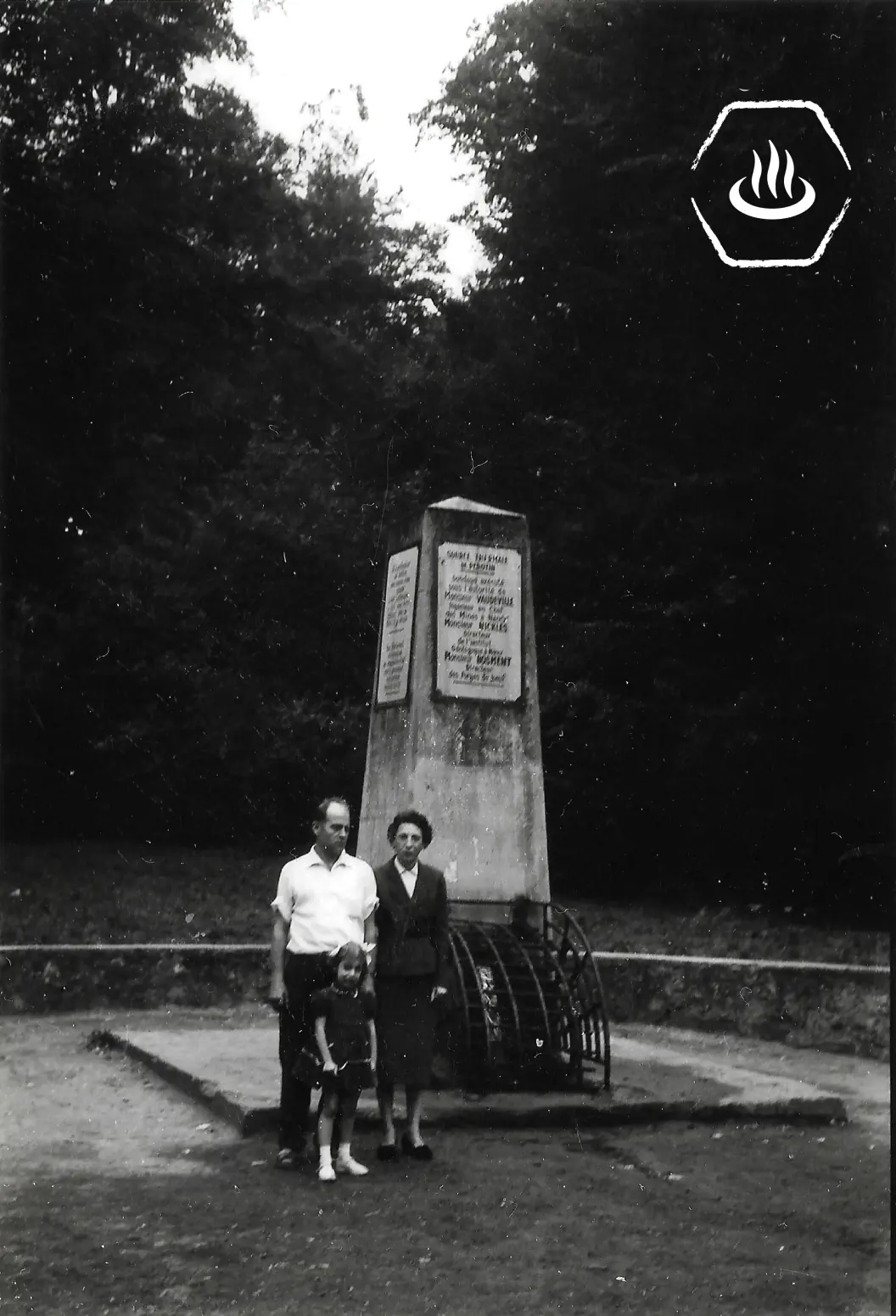
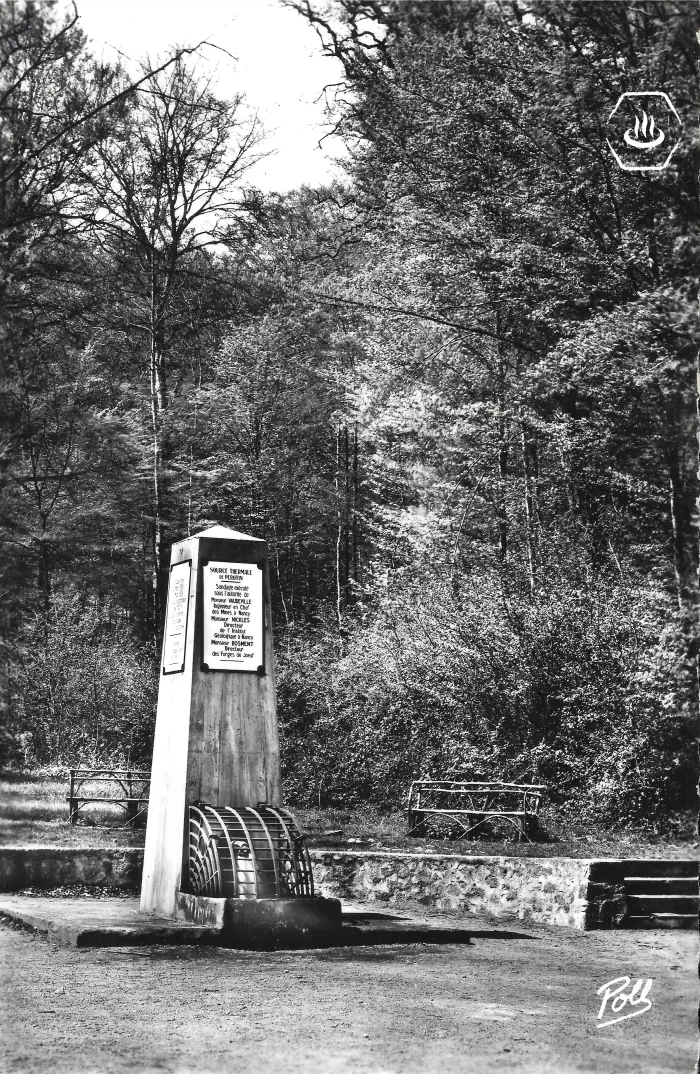
The commemorative plaque affixed to the fountain reads: ‘Source thermale de Pérotin – Sondage exécuté sous l’autorité de M. Vaudeville, ingénieur en chef des mines de Nancy’. Today, this aedicule, which is in a pitiful state of repair, is the only visible remnant of the site.
The nature of water and its therapeutic properties
The hot spring was said to have curative properties, particularly for ailments of the digestive tract, stomach and intestines, as well as arthritis, rheumatism and obesity. Some people soaked in it periodically. Others came to drink the water or fill bottles with it.
However, water only exhibits its full therapeutic properties when consumed on site (provided it has not been altered).
The water was chloridated, sodic, lithinated, ferruginous and sulphurous. Due to the presence of hydrogen sulphide, it gave off a strong rotten egg smell. You can find out more about this sulphur gas and its properties in our article, ‘How to cleanse your lungs with simple, natural ways‘.
Finally, the Pérotin thermal spring (the result of a 950 metre borehole) was not natural. Natural springs form when water rises to the surface, carrying traces of each geological layer it has passed through, as well as every microorganism it has encountered along the way.
Despite its remarkable therapeutic properties, the Pérotin spring was not as powerful as a natural one.


